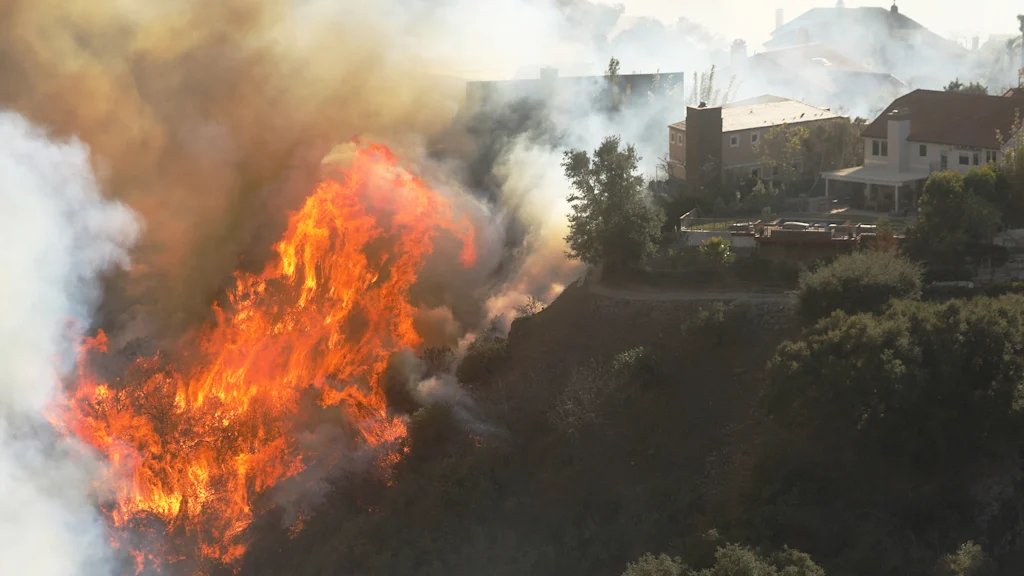Except for the skeletons of demolished buildings or the occasional new construction site, the Pacific Palisades—the wealthy, elevated coastal enclave of Los Angeles that was consumed by wildfires in January—remains mostly blank.
Much of the wreckage, rubble, soil, and plant life has been scrapped and removed by the Army Corp of Engineers. Trees are among the few elements of the area that remain as they were, remnants of the community’s long obsession with them, including famous residents like Abbot Kinney and Will Rogers. In a landscape now devoid of landmarks, such survivors (roughly 75% of street trees made it through the fire) tell a story and connect residents to the past.
“I would fill up every water bottle I had and drive an hour back to the Palisades and water the jacaranda trees in my yard,” said Vicki Warren, board secretary of the Palisades Forestry Committee, of her effort to care for the grand, purple-flowered trees in her yard. “People are doing things like that, because it’s such a healing thing to take care of a living thing near your home.”
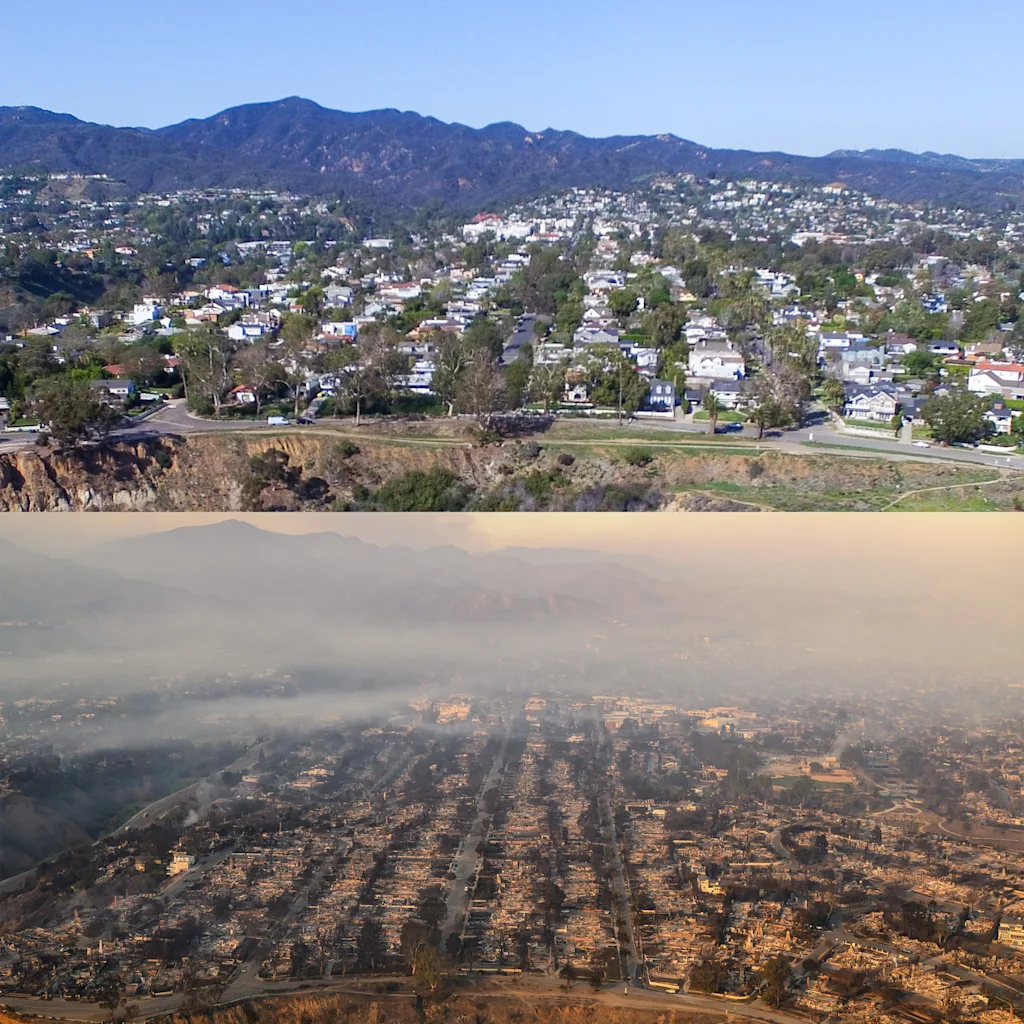
For many Palisades residents, the landscape has also become a flashpoint around larger questions of rebuilding and resiliency. In community meetings, many residents have pushed back against proposals to mandate more fire-resilient yards. They’re especially opposed to a concept called Zone Zero, which would mandate creating an ember-resistant, noncombustible barrier around homes that would require clearing out a large number of plants and trees (including, in some cases, those trees that survived the blaze).
Supported by state fire officials and the insurance industry, Zone Zero is a concept being embraced by the California Board of Forestry and Fire Protection, which has sped up the process of drafting a Zone Zero regulation for high-fire-risk areas. Governor Gavin Newsom signed a declaration in February seeking to expedite the process and create rules by the end of the year.
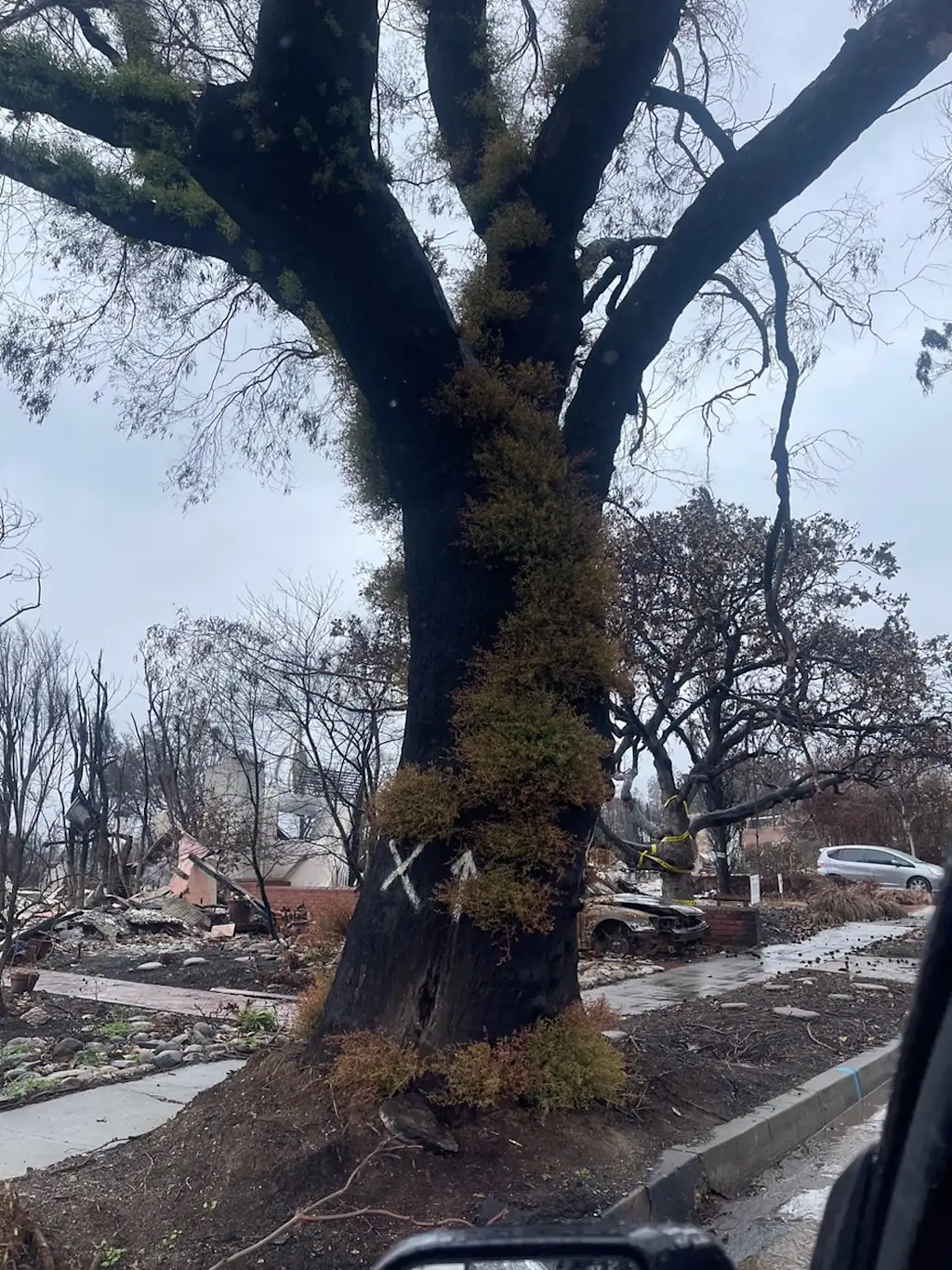
Regulatory tension
The battle over rebuilding and replanting to mimic pre-fire designs has become a growing issue in the Pacific Palisades, Altadena, and other high-risk areas in Los Angeles County.
Some residents who became accustomed to dense foliage, lush yards, and the privacy that such plantings bestowed, fear efforts to regulate landscaping to the degree the government is proposing. In a statement last month, Traci Park, the L.A. city councilmember whose district includes the Palisades, characterized the “one-size-fits-all regulations” as “overly burdensome” and “built on incomplete science applied without local input or context.”
And it’s not just an issue for areas impacted by the January 2025 wildfires. Roughly 17% of the state’s buildings and large parts of L.A. would be impacted by pending statewide regulations and a recent update of fire-hazard maps. With the insurance industry supporting the idea and wildfire risk only growing, these regulations could very well spread to other states (Kauai County in Hawaii, and Boulder, Colorado, passed such rules earlier this year.)
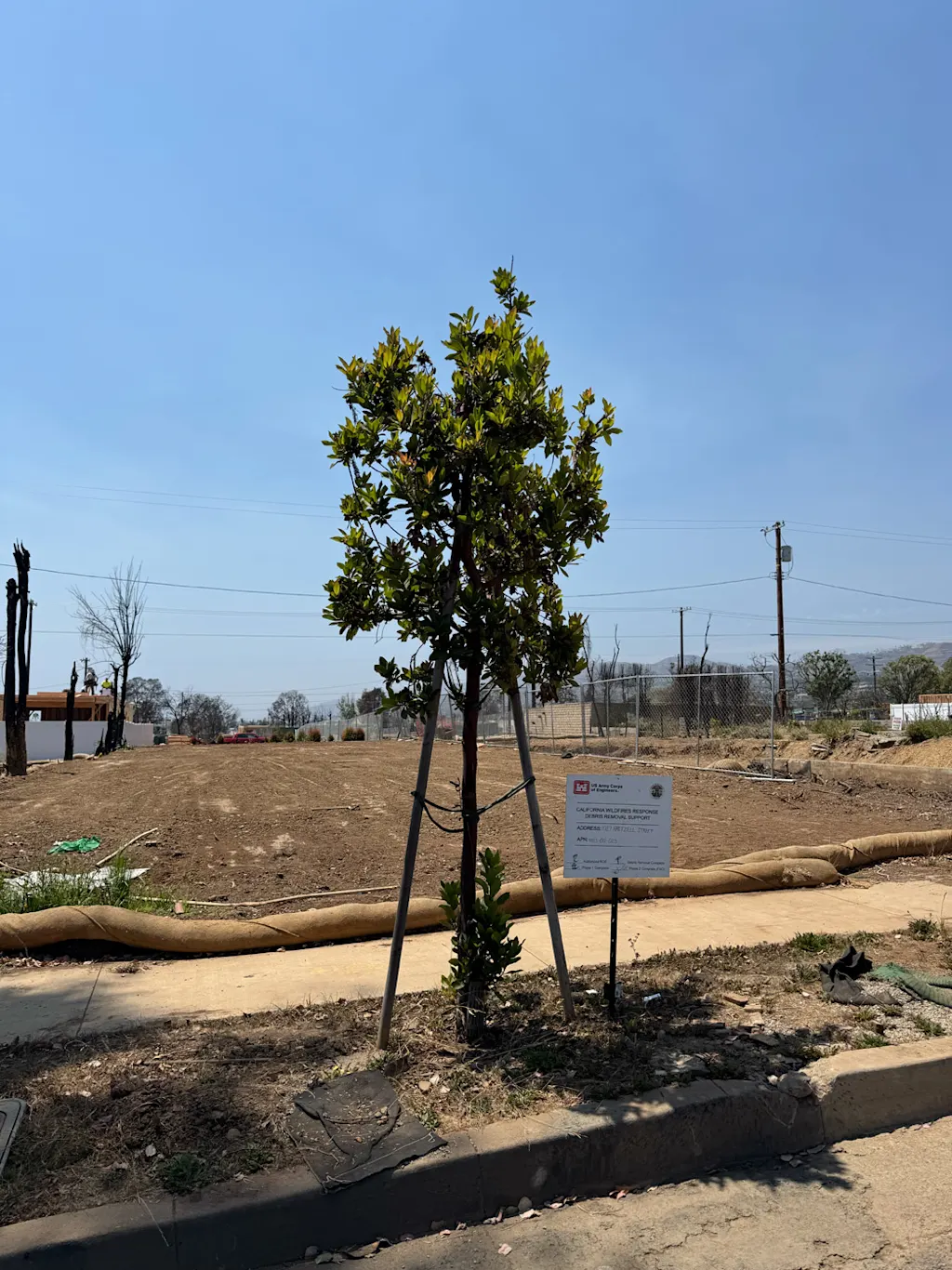
The Zone Zero idea comes from research about the causes of fires in the state, and efforts to create a more defensible wildland-urban interface, the area where most wildfires start and spread. Since wildfires tend to spread to homes due to flying embers and ignited plants and trees, the Zone Zero approach seeks to remove fire hazards and potential sources of ignition near a residence. Recent research showed that both hardening homes and enacting Zone Zero would cut the number of impacted structures during a wildfire in half.
“The vegetation is also very, very critical, because all vegetation will burn under enough duration and heat,” said Kimiko Barrett, lead wildfire researcher for Headwaters Economics, a nonprofit research group focused on community development. “I think where it becomes challenging is when you’re talking about large trees. And you know, some types of trees are going to be more tolerant to fire than others, and that’s where it starts to get a little bit nebulous.”
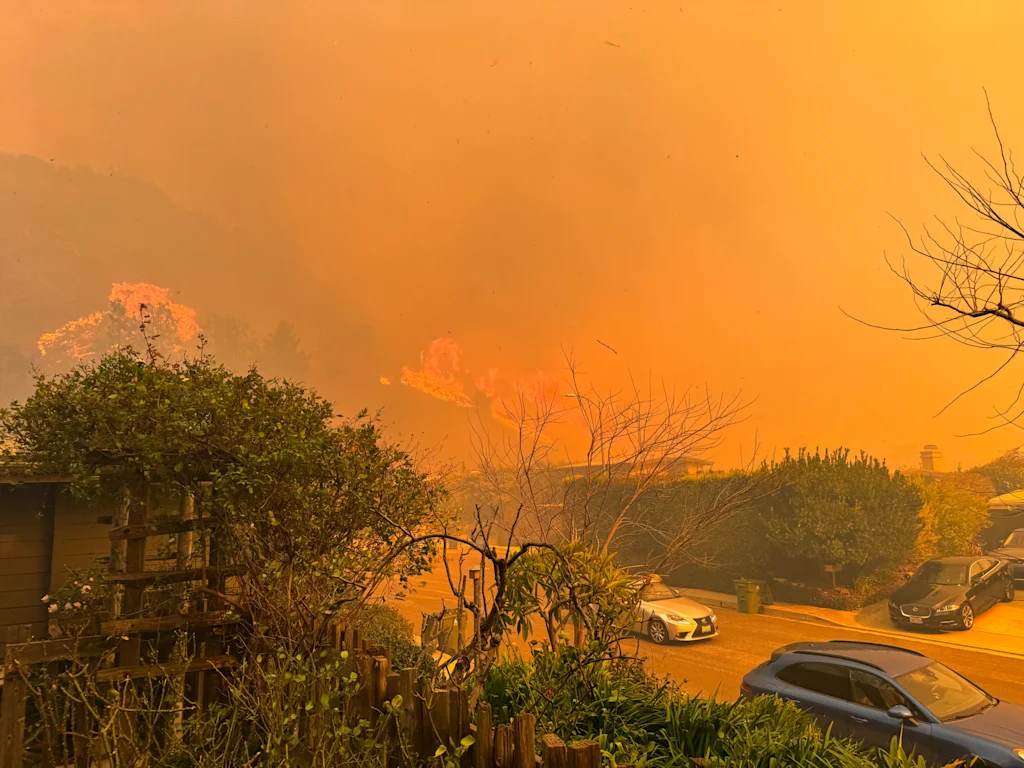
More Security or Moonscapes?
Tony Andersen, Executive Officer with the Board of Forestry & Fire Protection, says it’s a select few vocal homeowners are pushing back against these regulations. To him, it’s clear the status quo isn’t working, and these evolving guidelines, arrived at through years of research and community feedback, can be an important tool in the toolbox to prevent fire damage.
“There is a lot of science out there that is supporting this, guiding it, directing it, and serving as sort of a framework from what we’re working from,” he says.
Research suggests applying Zone Zero to high fire-hazard areas of LA county would require changes around 400,00 structures, and opponents argue these shifts could have significant impacts on shade, wildlife habitat, biodiversity, and urban heat islands (and cooling costs). The city’s Community Forestry Advisory Committee released a report saying these Zone Zero recommendations would have a $13,000 impact on every household, on average. A September 18 meeting by the Board of Forestry in Pasadena to obtain feedback over proposed Zone Zero regulations received a fairly negative response from homeowners.
“They’re talking about destroying our urban canopy, hundreds of acres of trees for uncertain benefits,” said Cyndi Hubach, a member of L.A.’s Community Forest Advisory Committee.
Many residents in the Palisades and other areas in high-fire zones that would be impacted by the rules have pushed back, citing the cost, ecological impact, and the uncertainty some researchers have about Zone Zero recommendations. They’re angry that rules calling for reduced shrubs, hedges, and bushes; tightly trimmed trees; and empty spaces, especially in tighter urban lots, would turn their once-green backyards into what some have called unrecognizable moonscapes.
Some opponents argue the rules don’t make distinctions around types of trees—some have more oil and are more flammable. Another argument is around whether or not well-watered vegetation could be a good way to prevent ignition (and of course, how that could be checked or monitored). Warren, of the Palisades Forestry Committee, said there’s a number of researchers who argue that well-watered plants and trees can protect homes and block embers, and disputes the idea that the science around this issue is settled.
Palisades resident Tracey Price, who owns the landscaping company American Growers, said that the hedges on her property stopped embers and flames from burning her home, and she believes these proposed regulations would be overkill, as properly maintained trees and plants can save structures.
“Enforcing Zone Zero? Let’s start with ALL city/county/state/federal buildings first, every library and post office,” she wrote in a public comment about the regulations. “Report back to us in a year with costs and utility bill increases for more air conditioning due to lack of shade. More blackouts because of our already strained power grid. Zone Zero removes life-saving protection.”
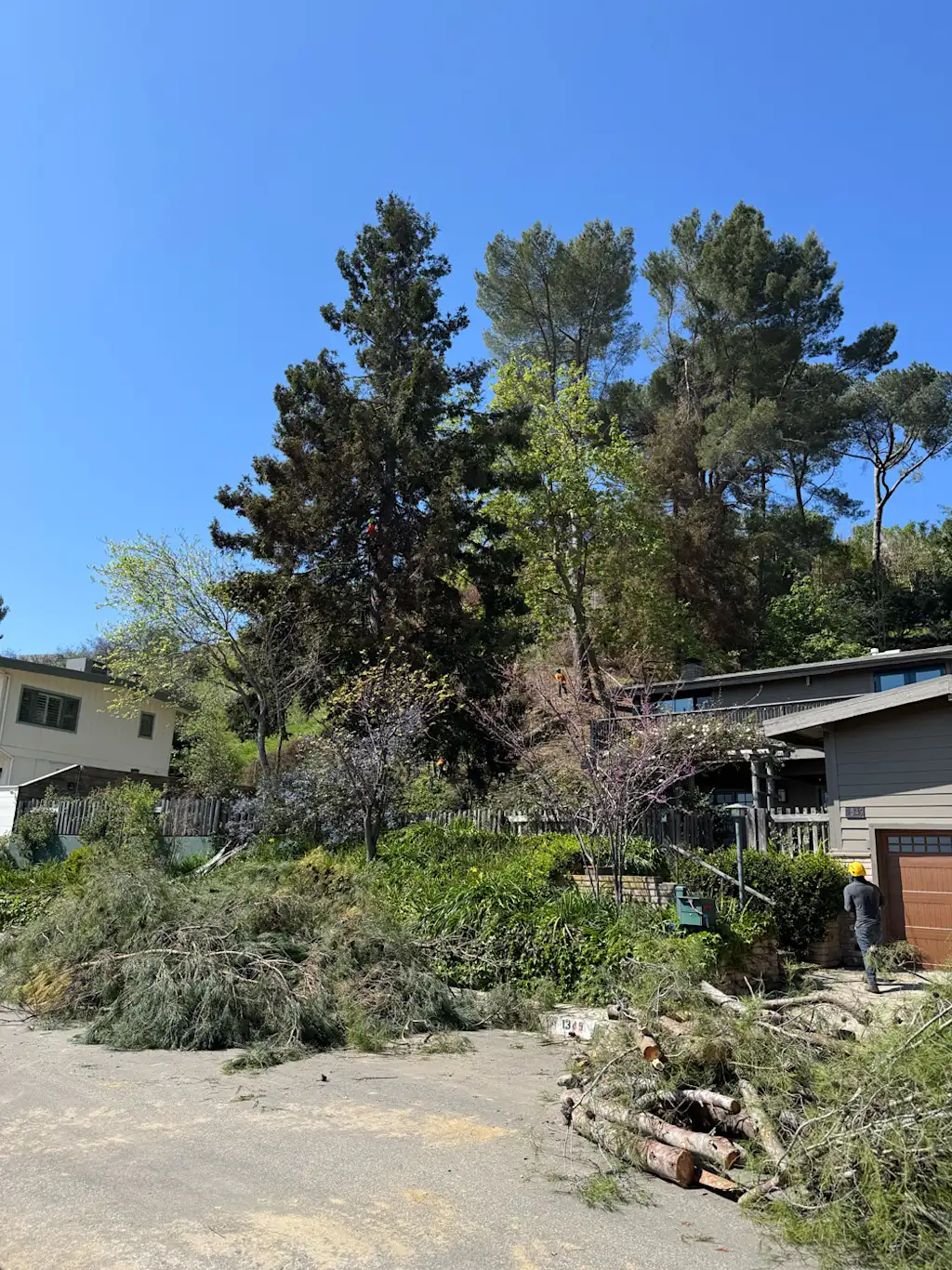
A Cultural Shift in Landscaping
California adopted a bill, SB 3074, in 2020 mandating the state create Zone Zero recommendations, but the governor’s push to get them finalized this year has created more anxiety around the rollout. In addition, the Insurance Institute for Business & Home Safety (IBHS), an insurance-industry backed nonprofit that researches building codes and safety and resilience standards, has enthusiastically supported the idea, which has led some opponents to claim it’s an effort by the industry to cut its losses.
The renewed focus on these issues comes as homeowners, who have endured months of back-and-forths with insurance firms to get their payments, planning with architects, and soil remediation and clearance, are likely set to start applying en masse for building permits. This may set up a scenario where home owners start building and planning for their new home, only to later learn there’s new regulations around landscaping.
This may have significant consequences, says Jennifer Gray Thompson, founder and CEO of advocacy group After the Fire USA. Non-Zone Zero compliant lawns might set homeowners up for higher insurance premiums, or trouble getting insured. But ripping out established landscaping could cost tens of thousands of dollars (she recalled residents rebuilding in Paradise, site of a deadly 2018 Camp Fire, spending up to $100,000 on landscaping that eventually got ripped out).
“I get it, like that’s what we’re used to doing,” Thompson says of reluctance to rethink landscaping. “We were also at one point used to going and using an outhouse and not having a bathroom in the house ever, and that it was totally disgusting to people that you would ever move your toilet into the house. And so, due to typhoid and cholera we had to make a cultural and generational shift. Megafires are a public health crisis like anything else, and require a similar shift.”
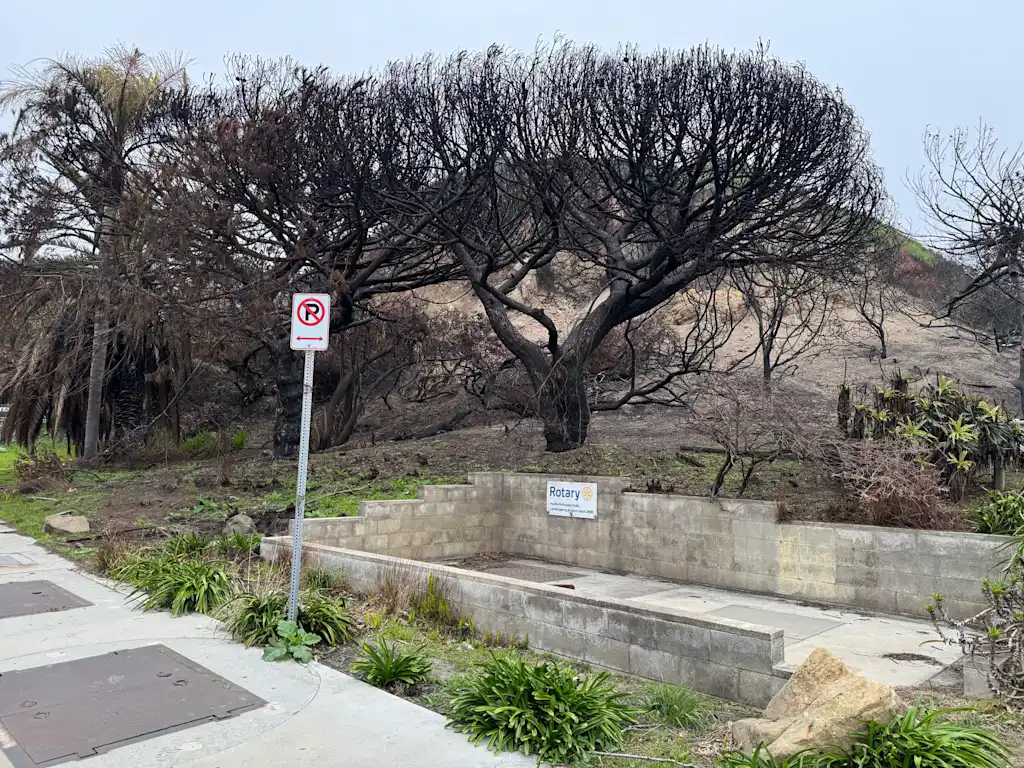
Growth Patterns
Homeowners have varied visions of how they want to rebuild as they plot their returns to the Palisades, including submitting plans that include a fixed vision for landscaping. It’s expected that more and more homeowners will start submitting in upcoming months, and uncertainty around final Zone Zero rules may cause some to plow ahead with their own ideas, or ignore the regulations completely.
Some designers are factoring this in. The organizers behind Case Study Adapt, a design competition to create new more resilient homes for the neighborhood, are deliberately designing homes and lots to provide barriers between plants and buildings, incorporate more water features, and utilize more native landscaping. Organizations like Fire Safe Marin, a Bay Area organization promoting fire safe landscaping, offer tips on reworking yards to be more fire safe.
Thompson believes that in the new era of megafires, it’s a matter of when, not if, Zone Zero and other such resiliency regulations become more widely adopted. But what happens in the Palisades might be a pivot point; the combination of wealth, celebrity, and clout in the area gives the community plenty of firepower to push back against these rules. Alternatively, adopting them—and using creating eye-catching landscapes with these rules in mind—could accelerate what Thompson sees as a vital shift.
The final iteration of these rules will be closely watched by both sides (draft language is already available). Opponents hope that any new rules come with more flexibility for preservation of certain trees, and more municipal control. Lots of L.A.’s urban tree canopy exists in the Palisades and hilly areas on the east side of town, both high fire severity zones, and arborists hope to preserve any and all urban trees they can.
There’s also live questions about enforcement. Will CalFire and local fire inspectors really be checking how trees are trimmed and watered on a regular basis?
And perhaps more important to insurability and survivability, following Zone Zero requires a full community effort. If a handful of residents on a block do not create these defensible zones, Barrett says, they not only put their homes at risk, they do the same for other homes, and increase the insurance risks of others.
This megafire era requires not just design shifts but more community collaboration to become resilient. As neighborhoods return, and react, to what’s becoming a more risky, fire-prone era, solidarity, not just combustibility, will become a watchword.
“This is not the moment for the individual American way,” Thompson says. “This is a group project.”

